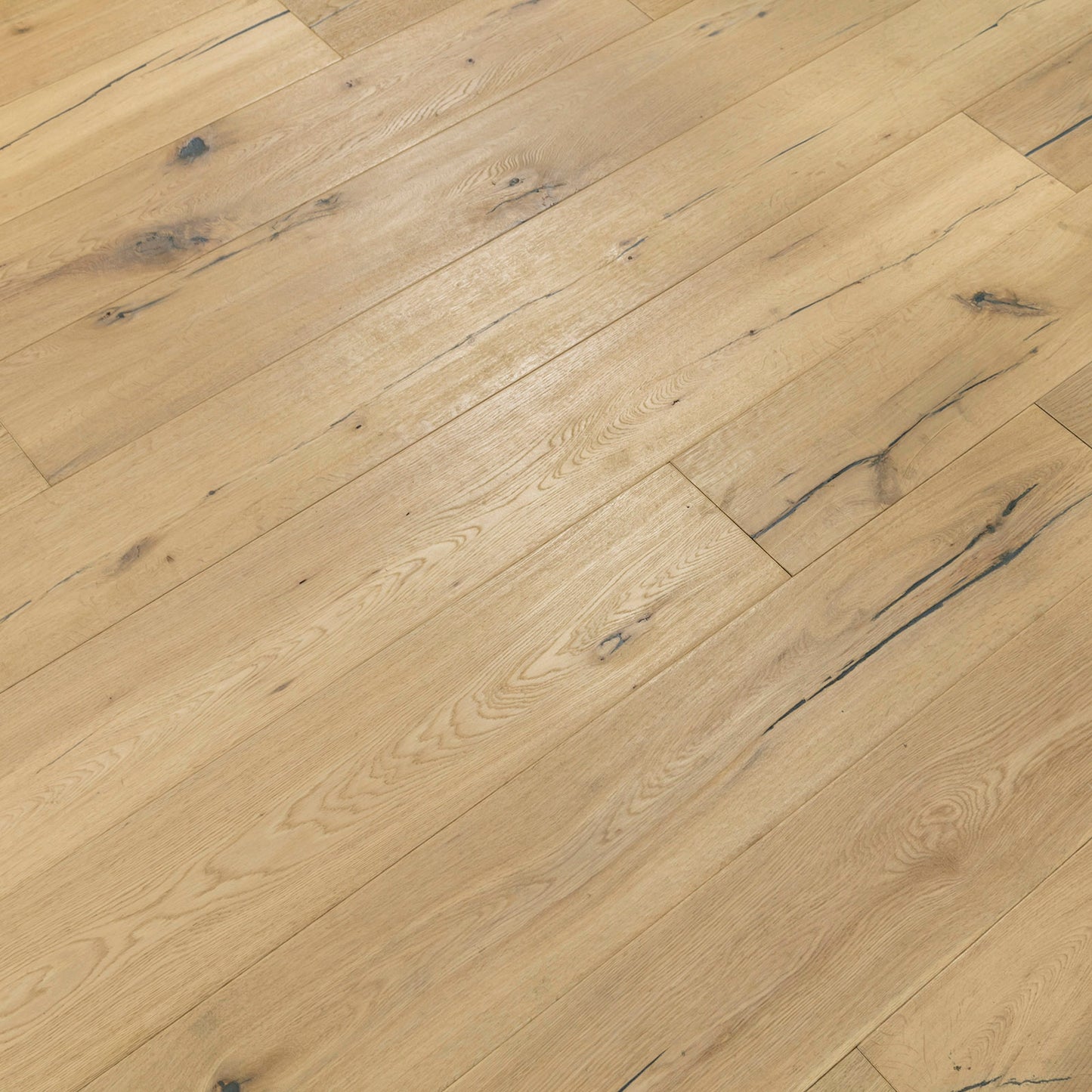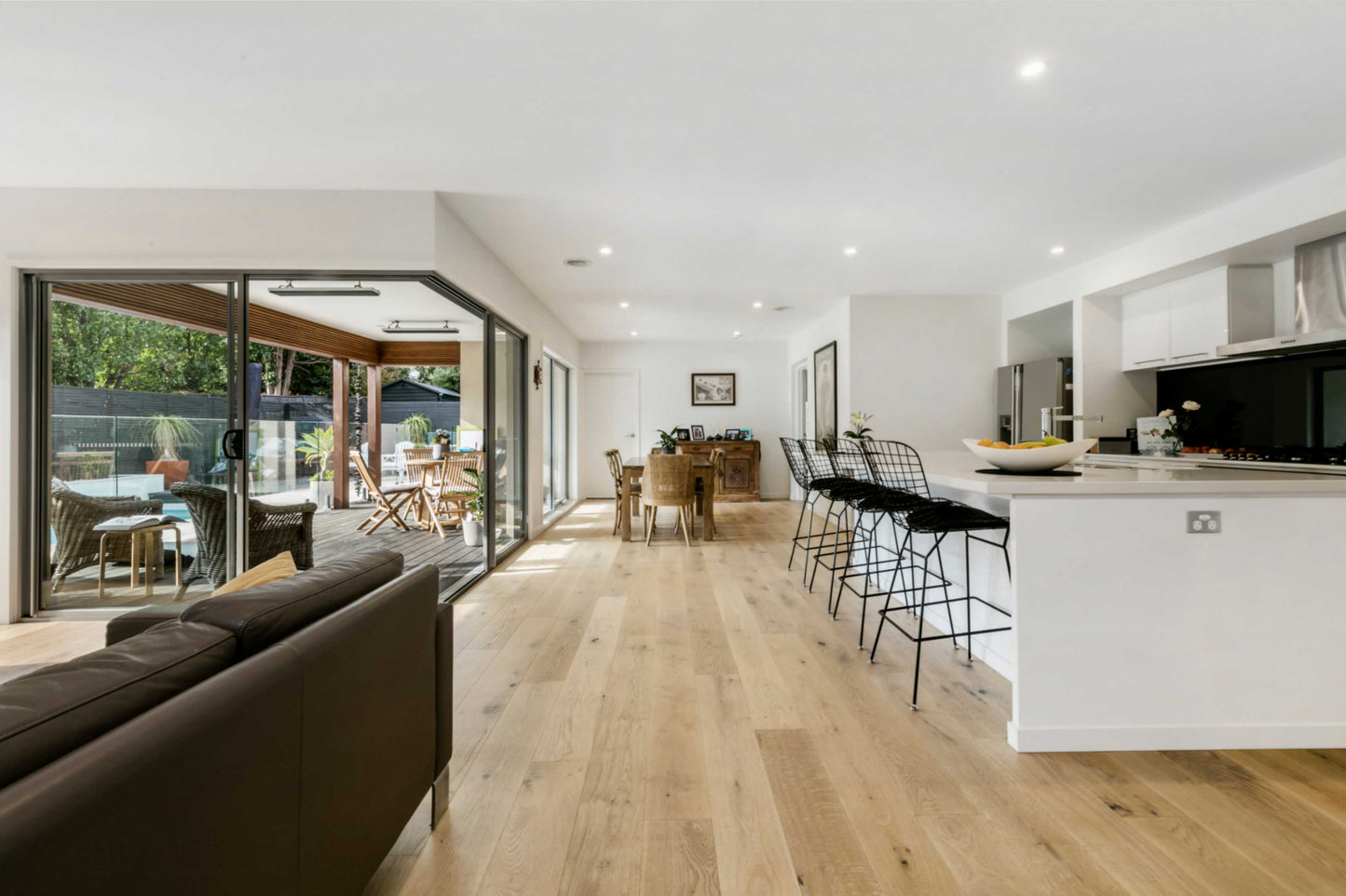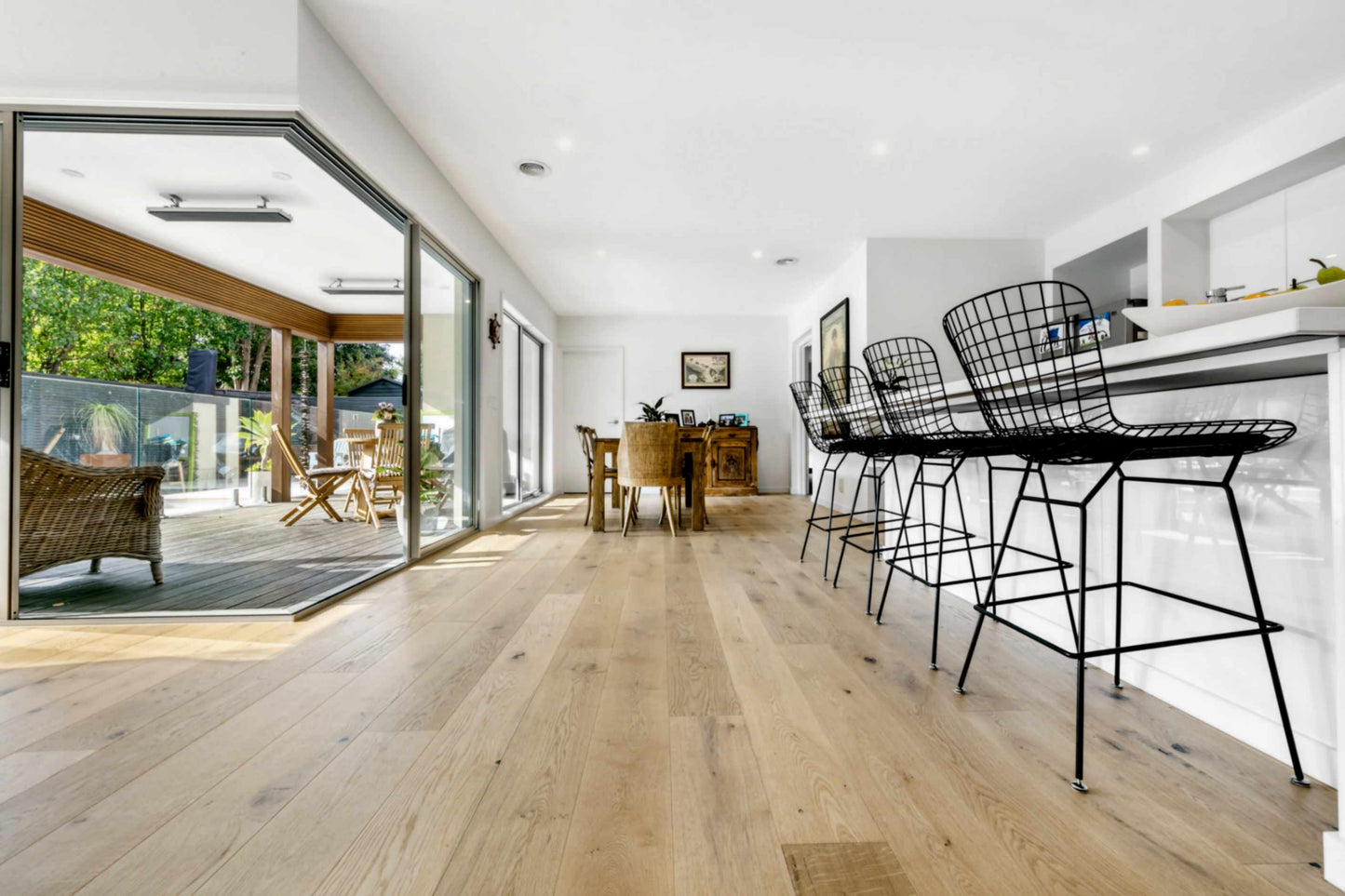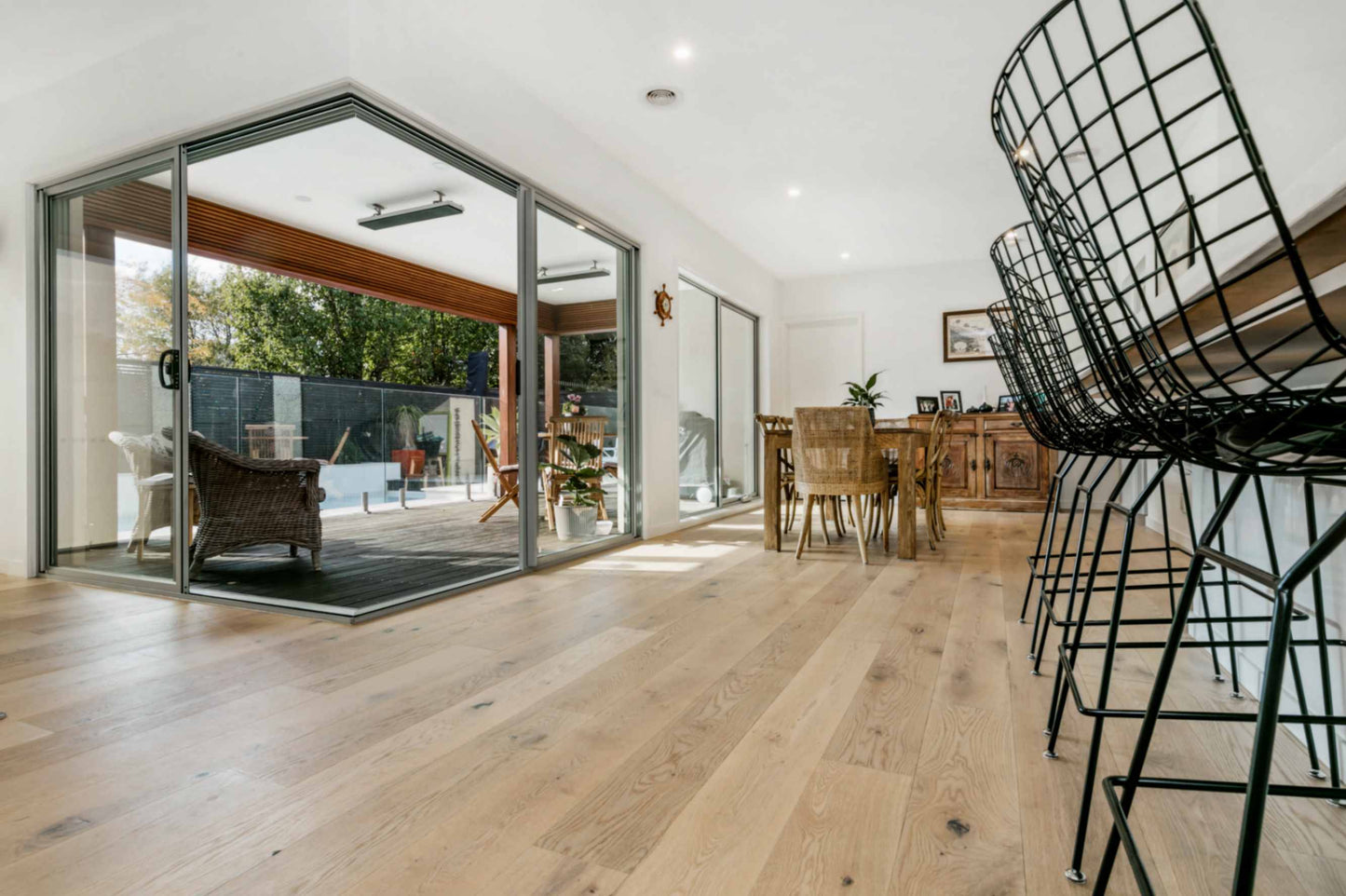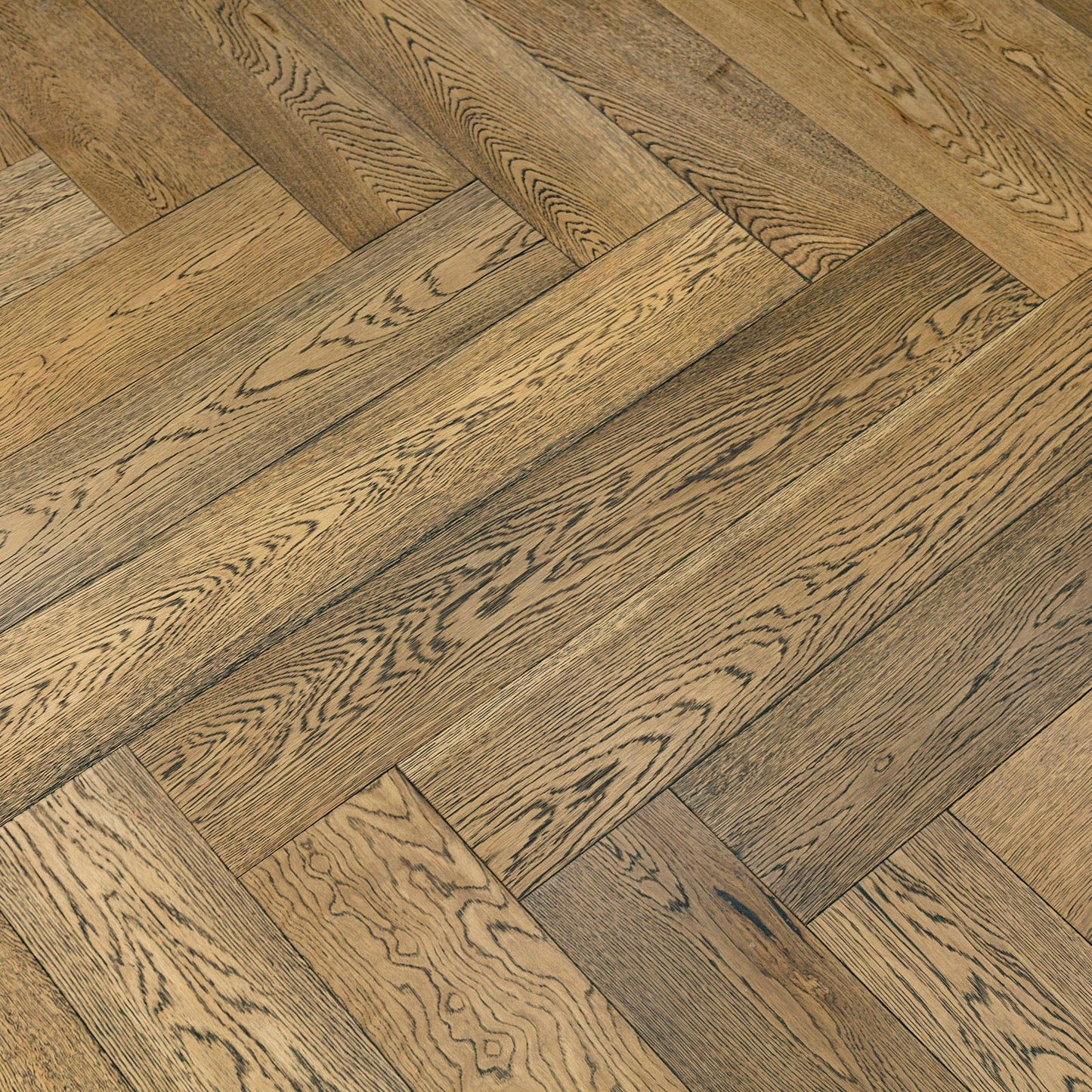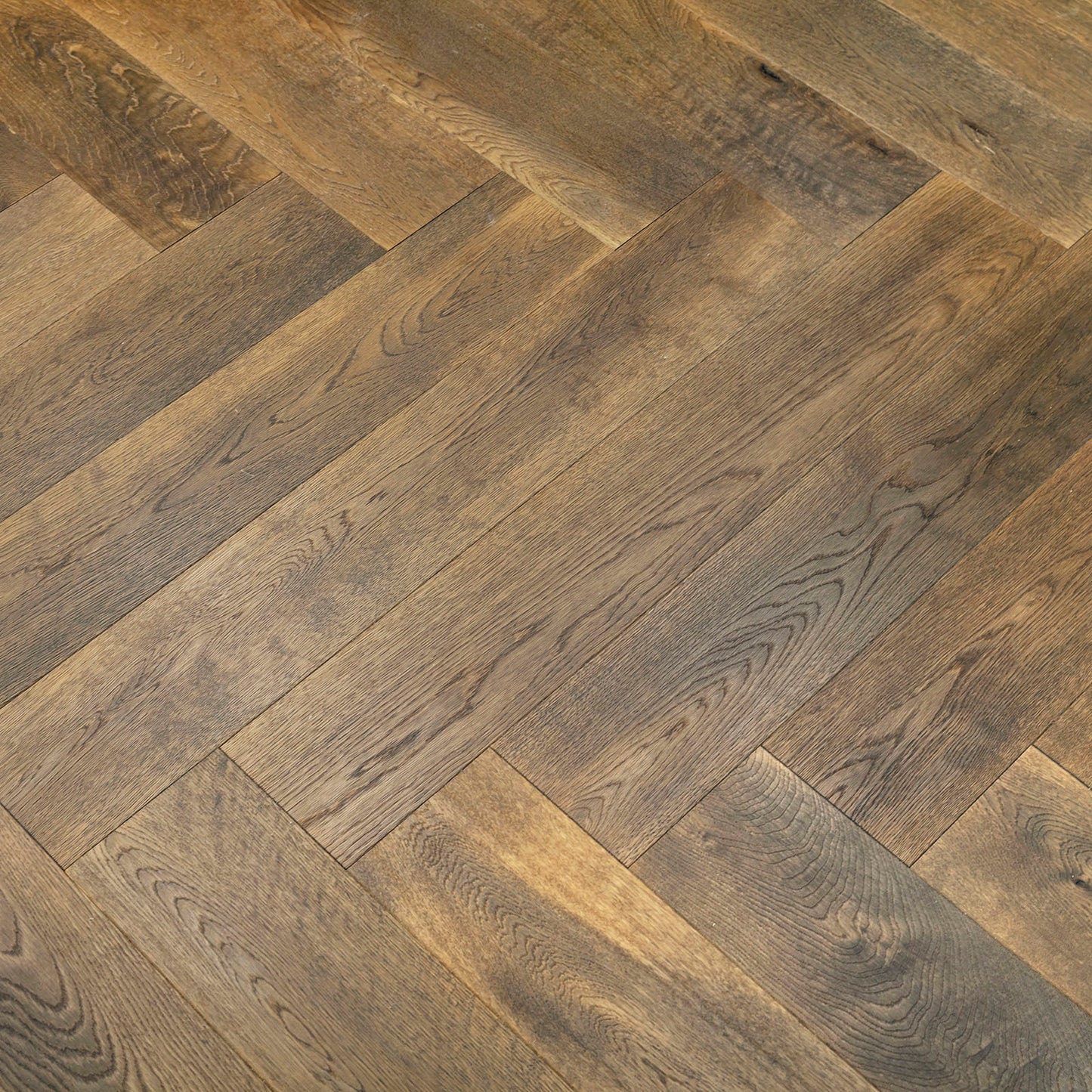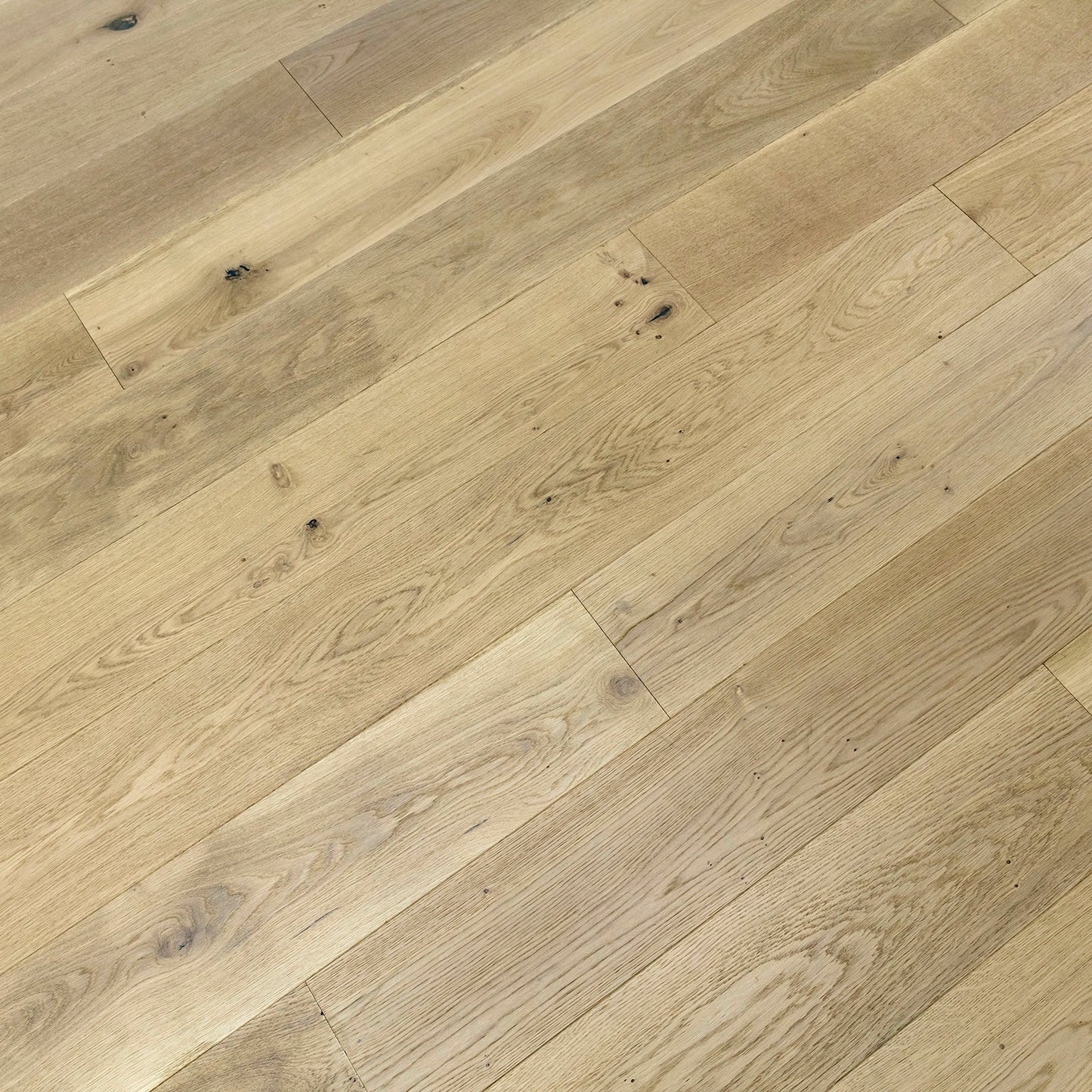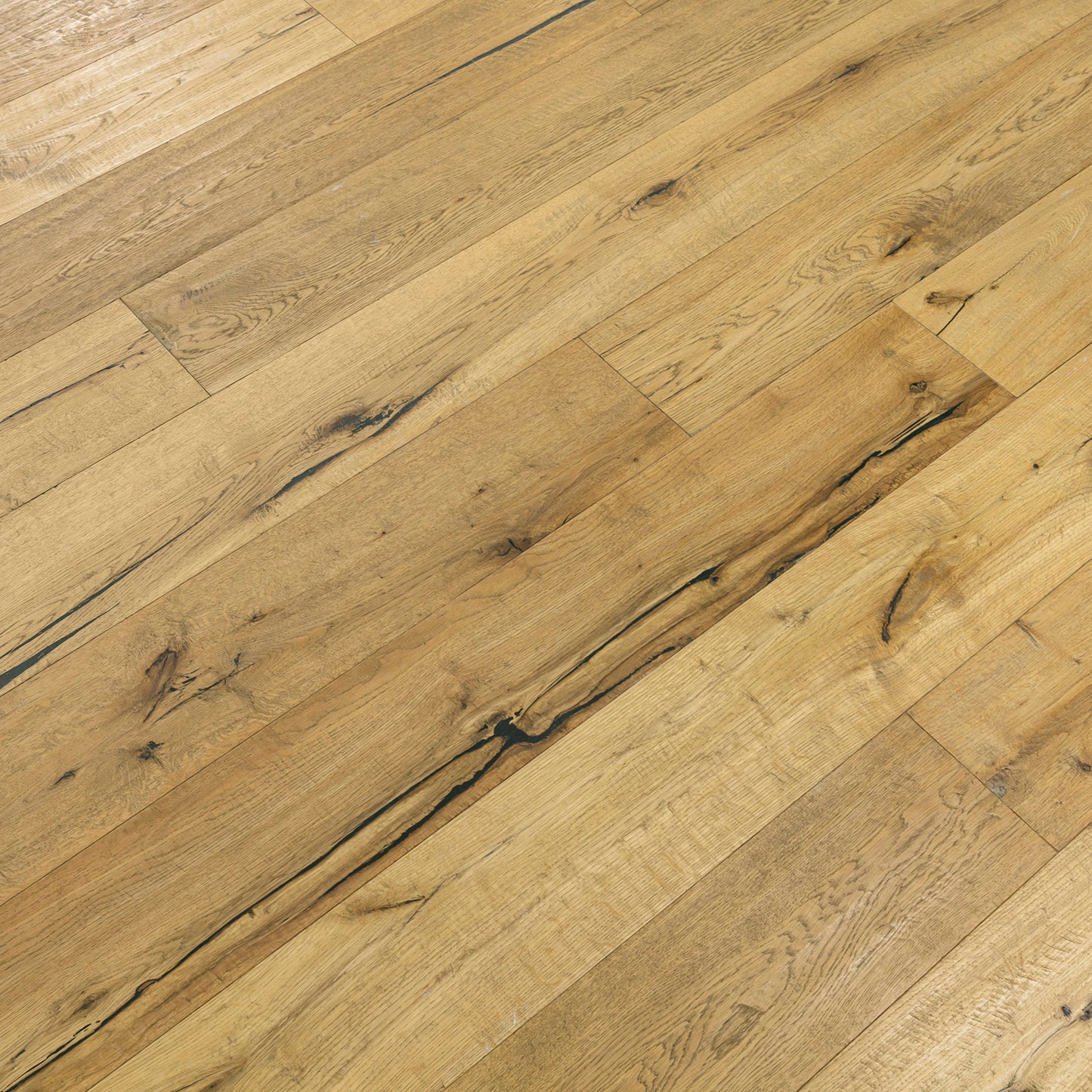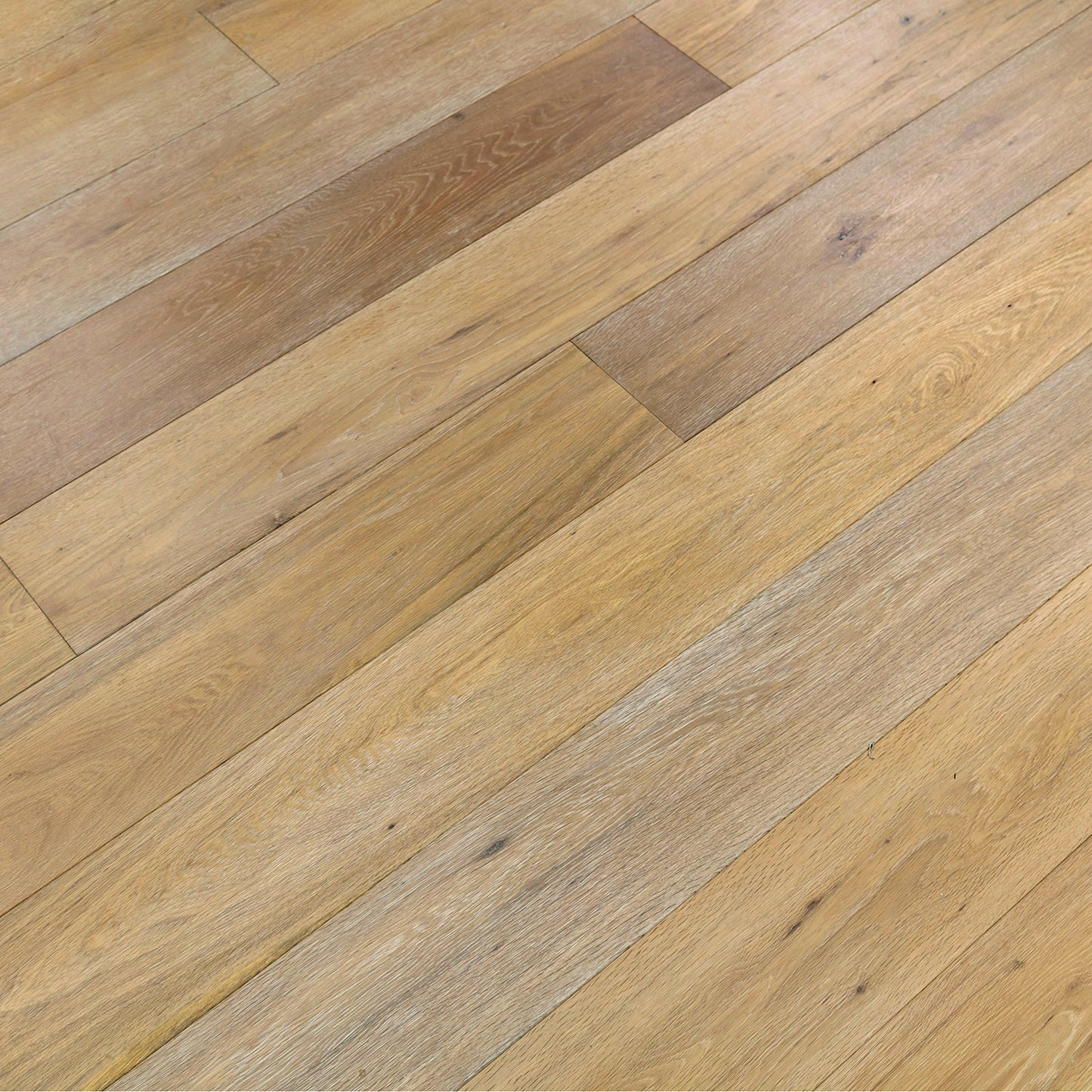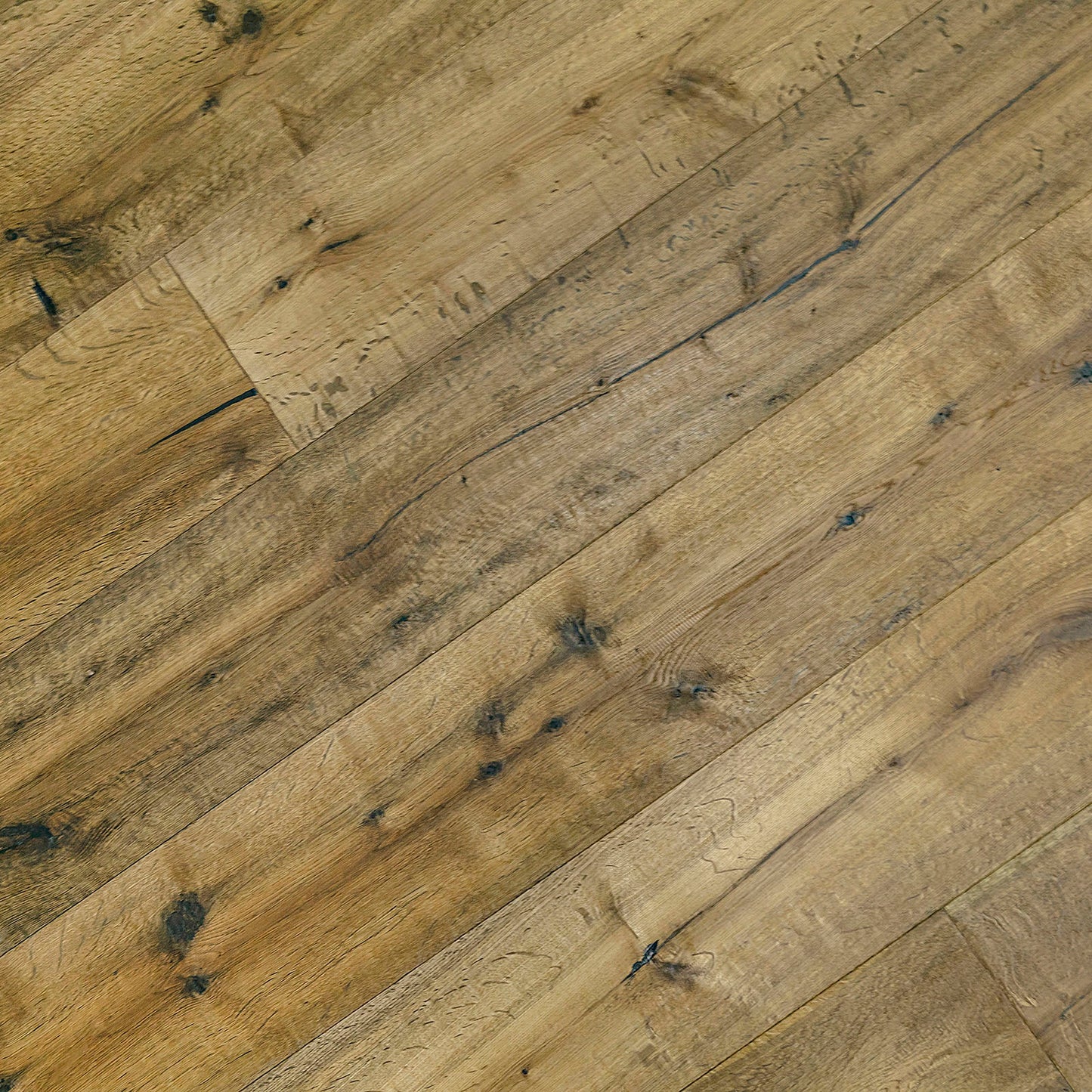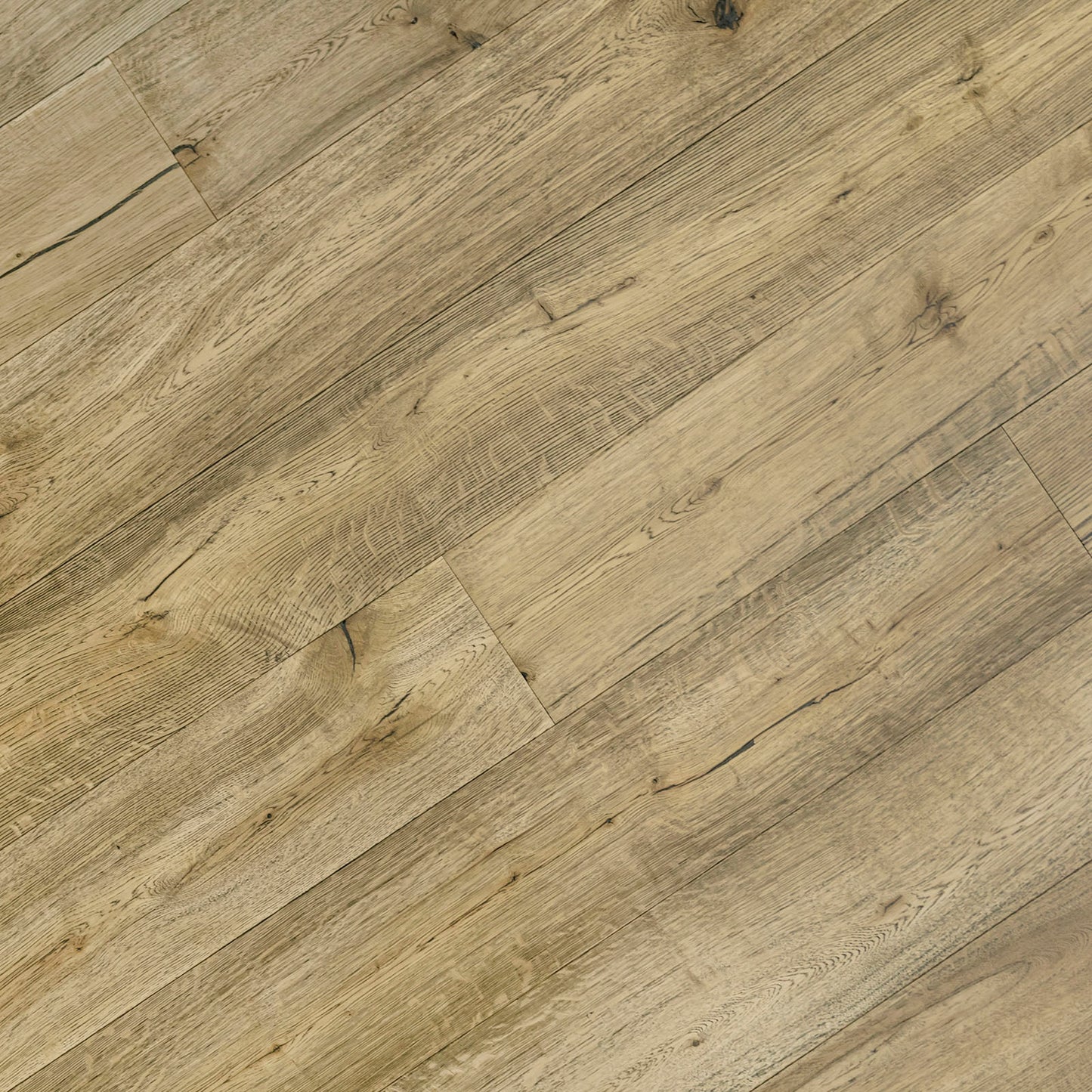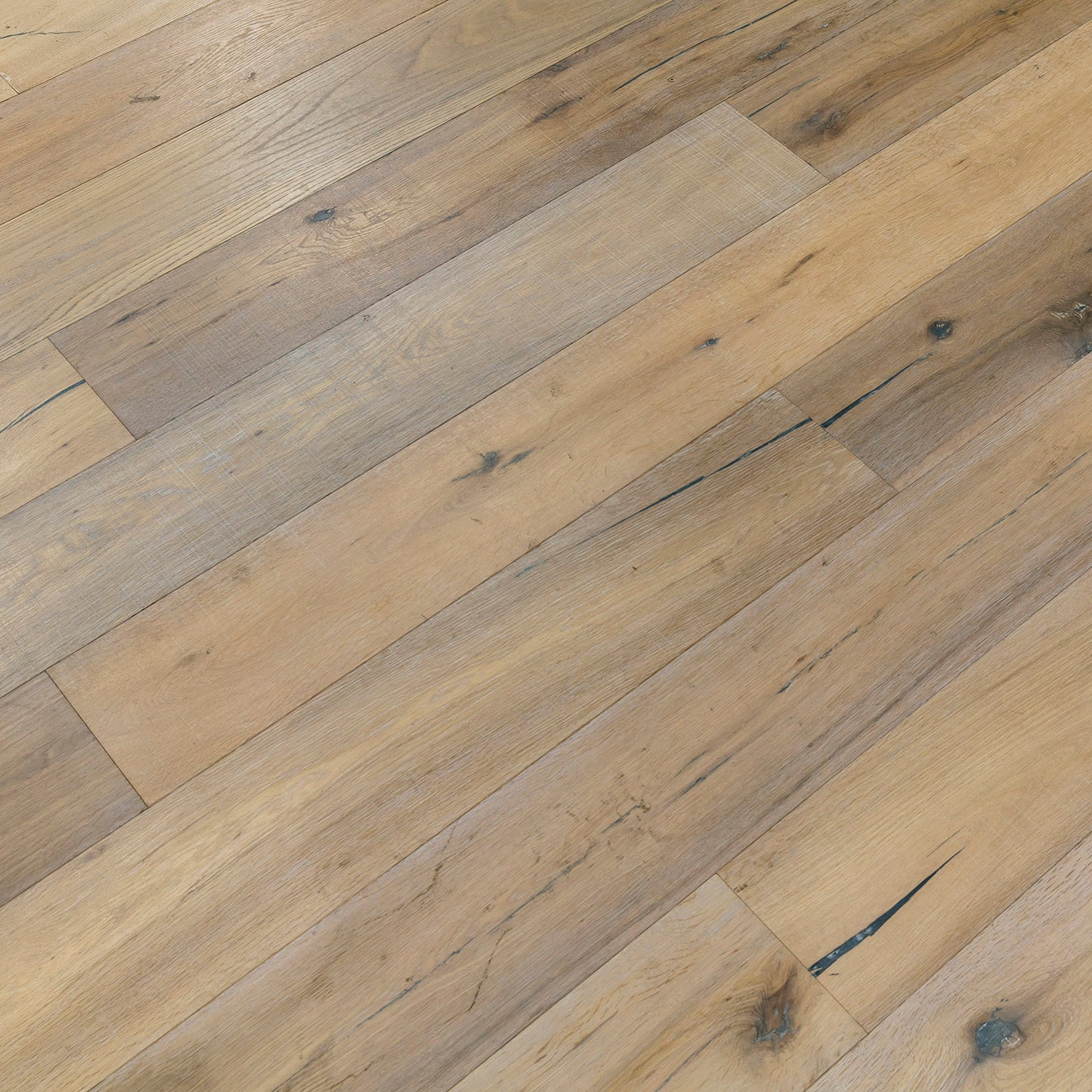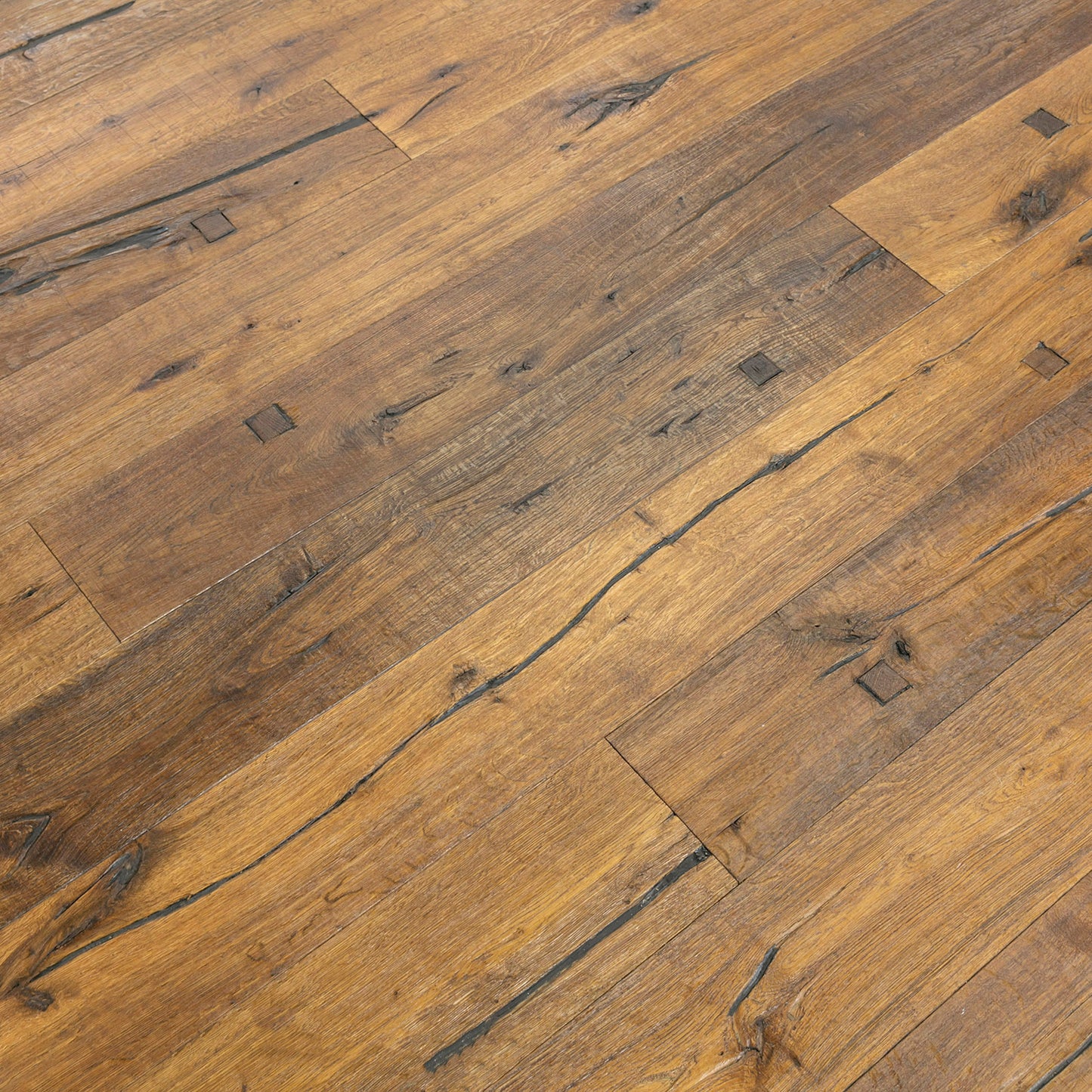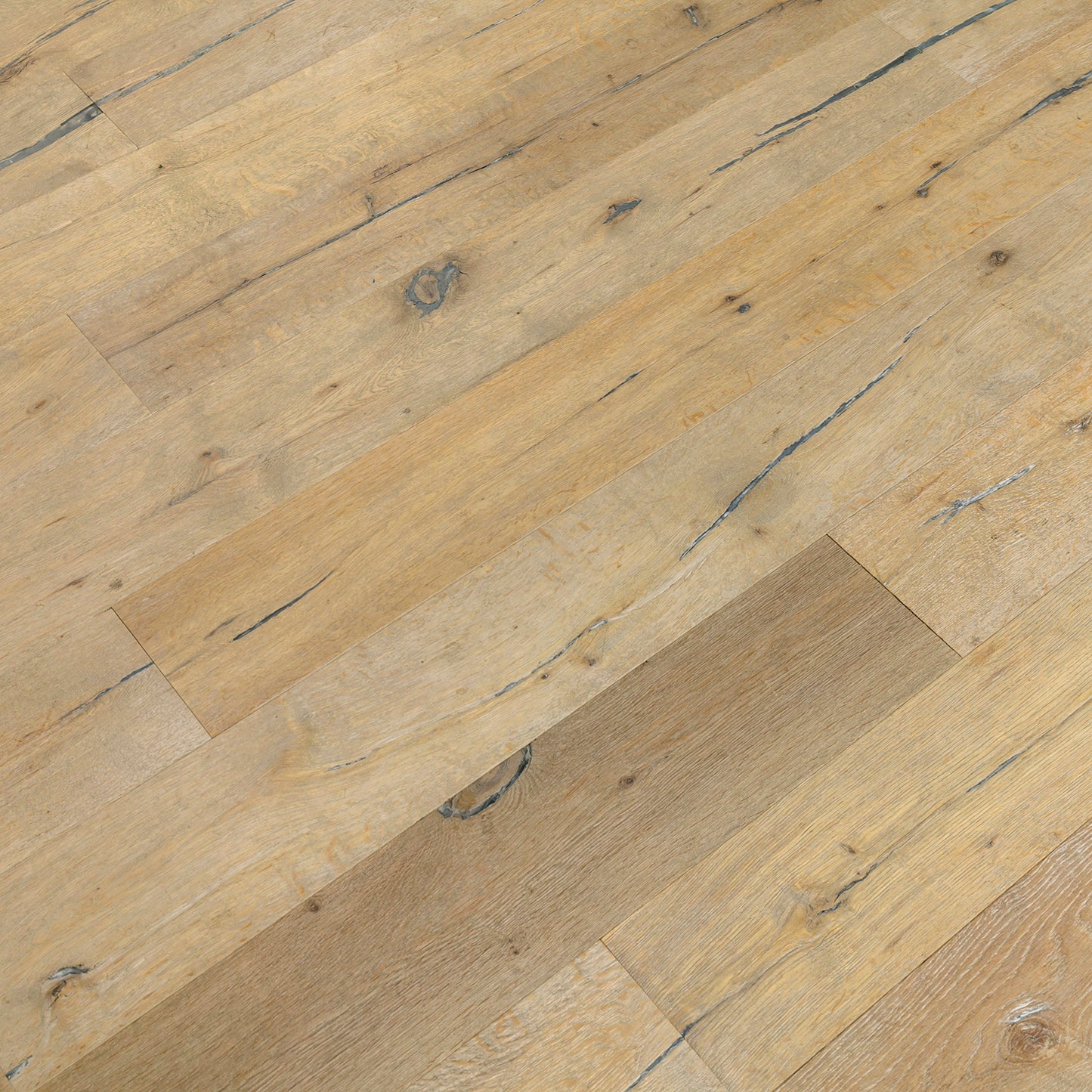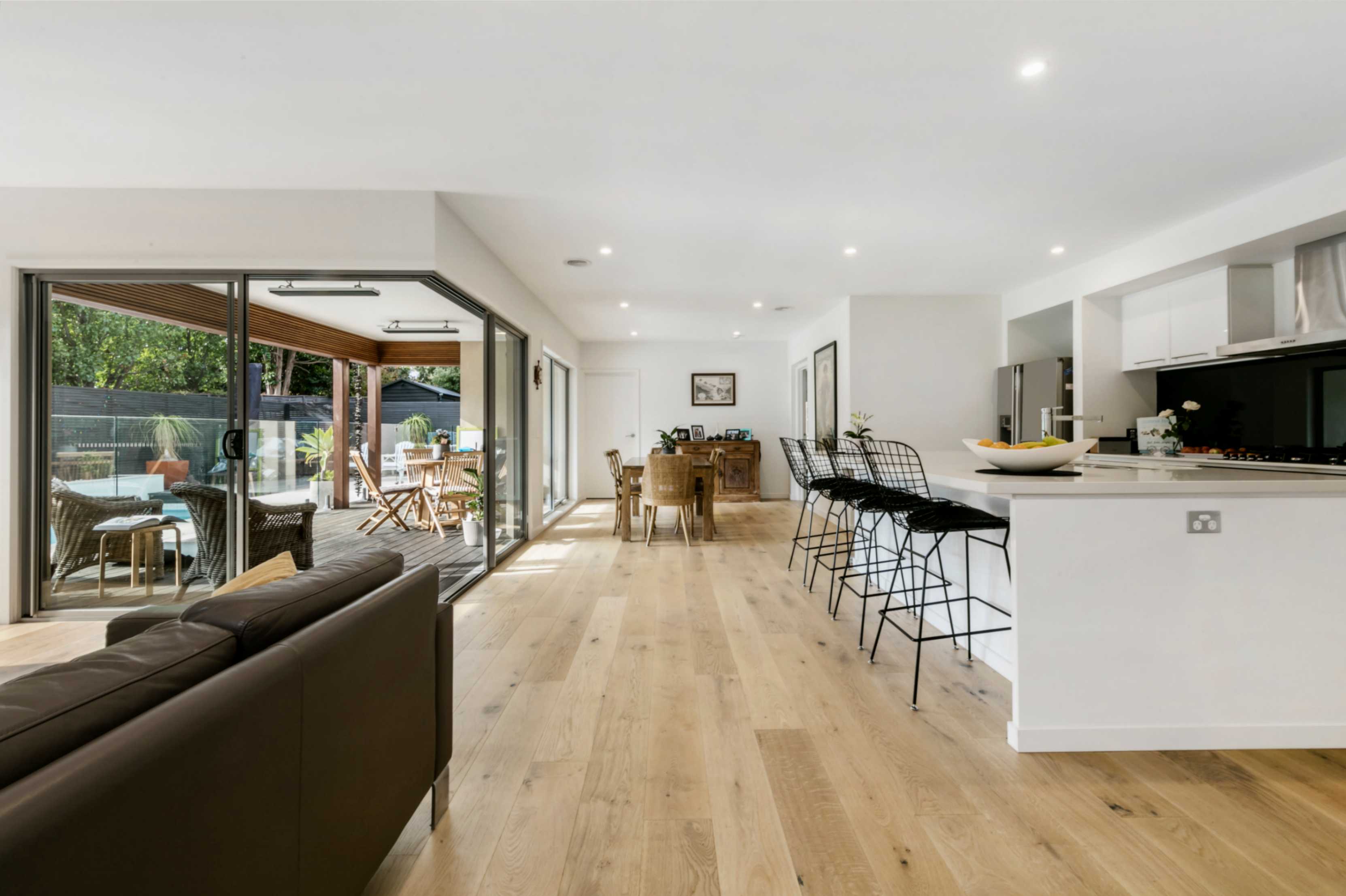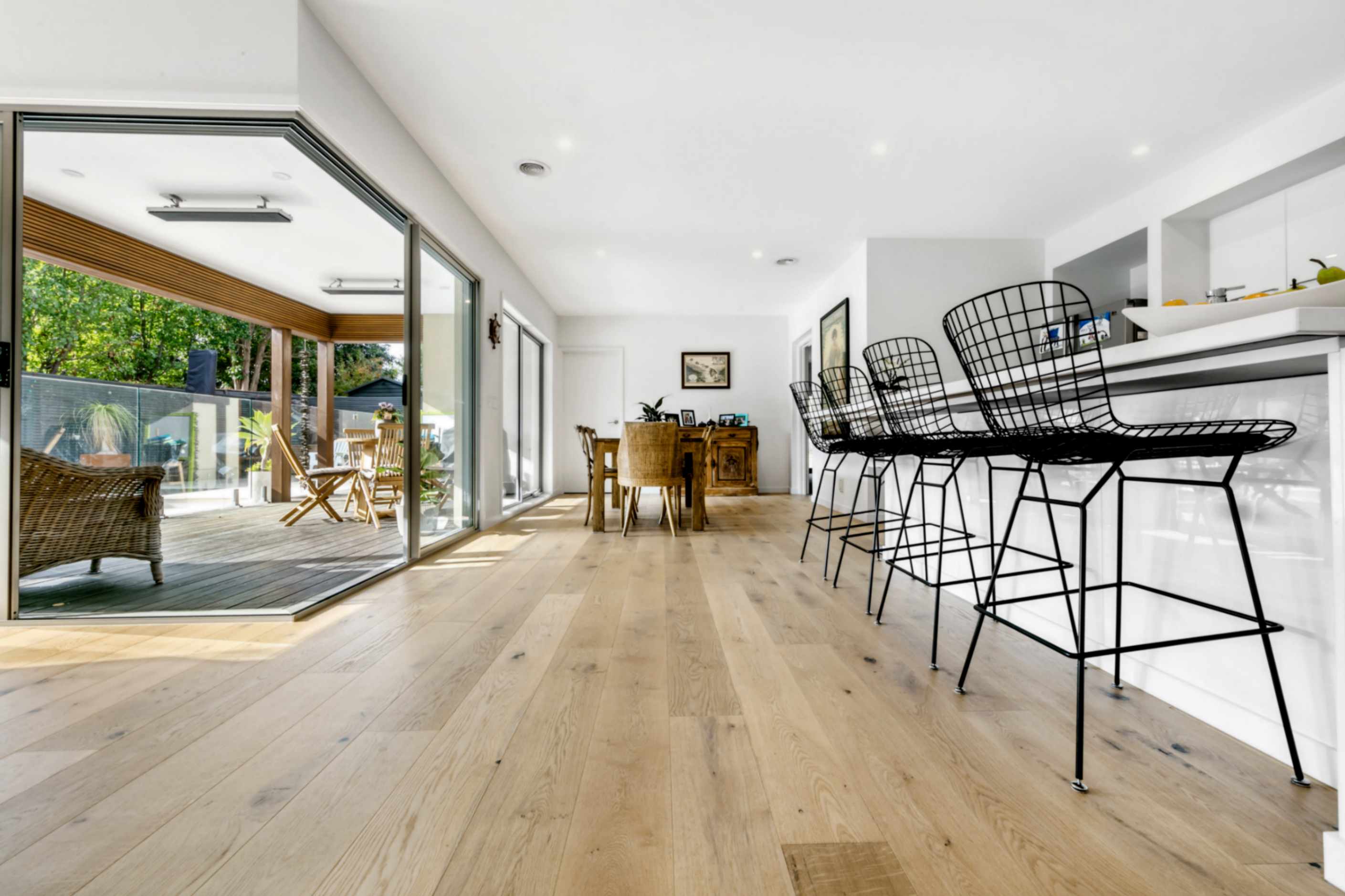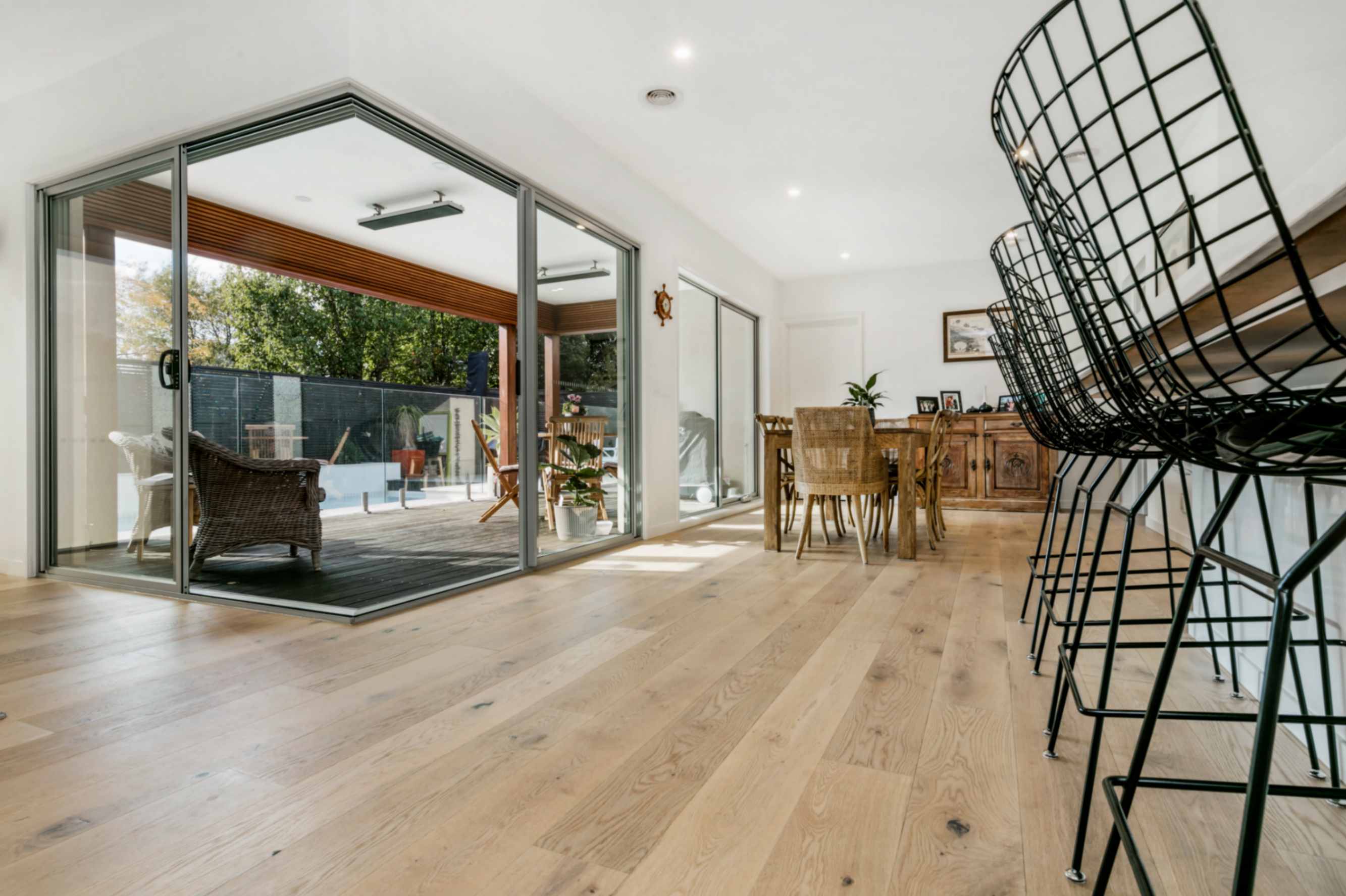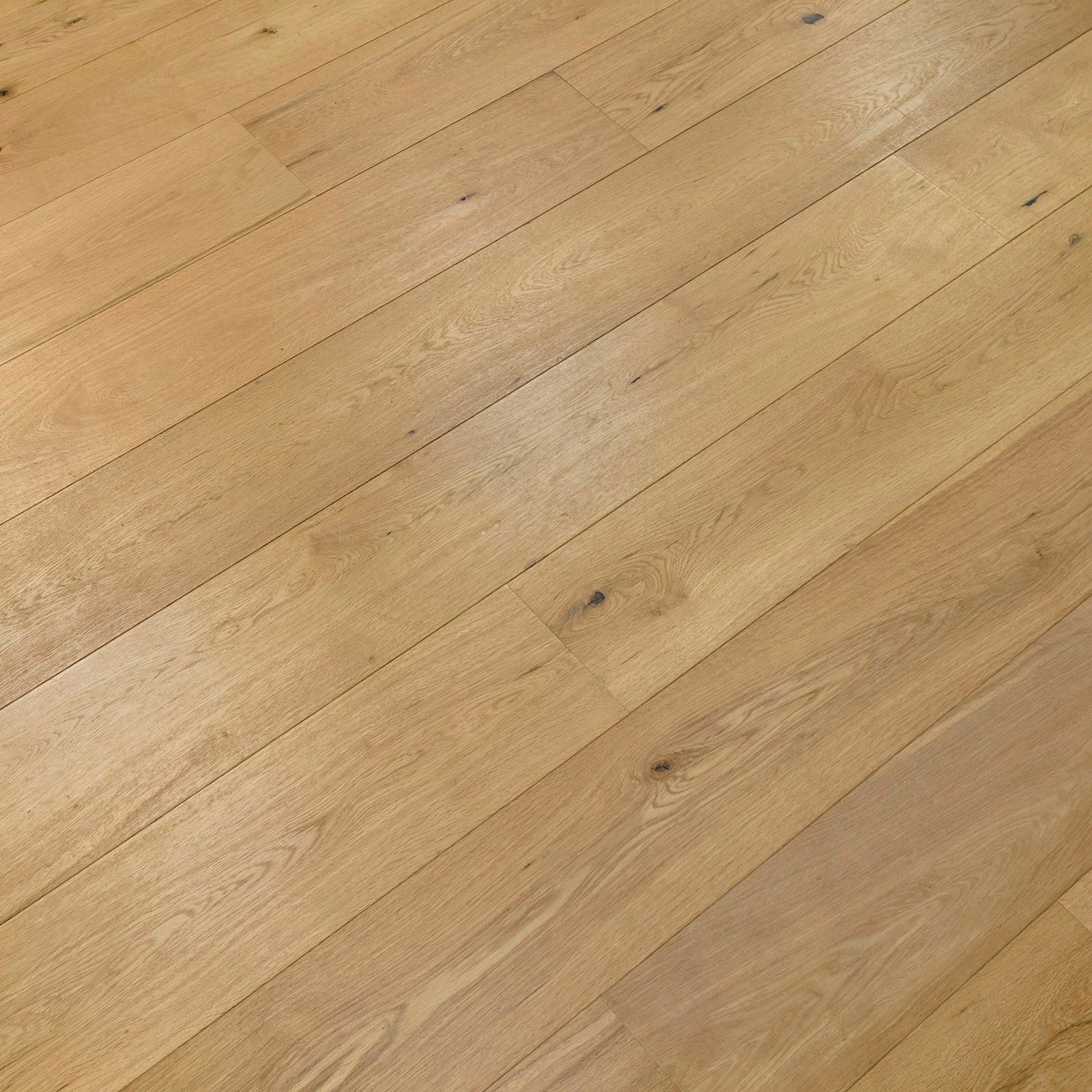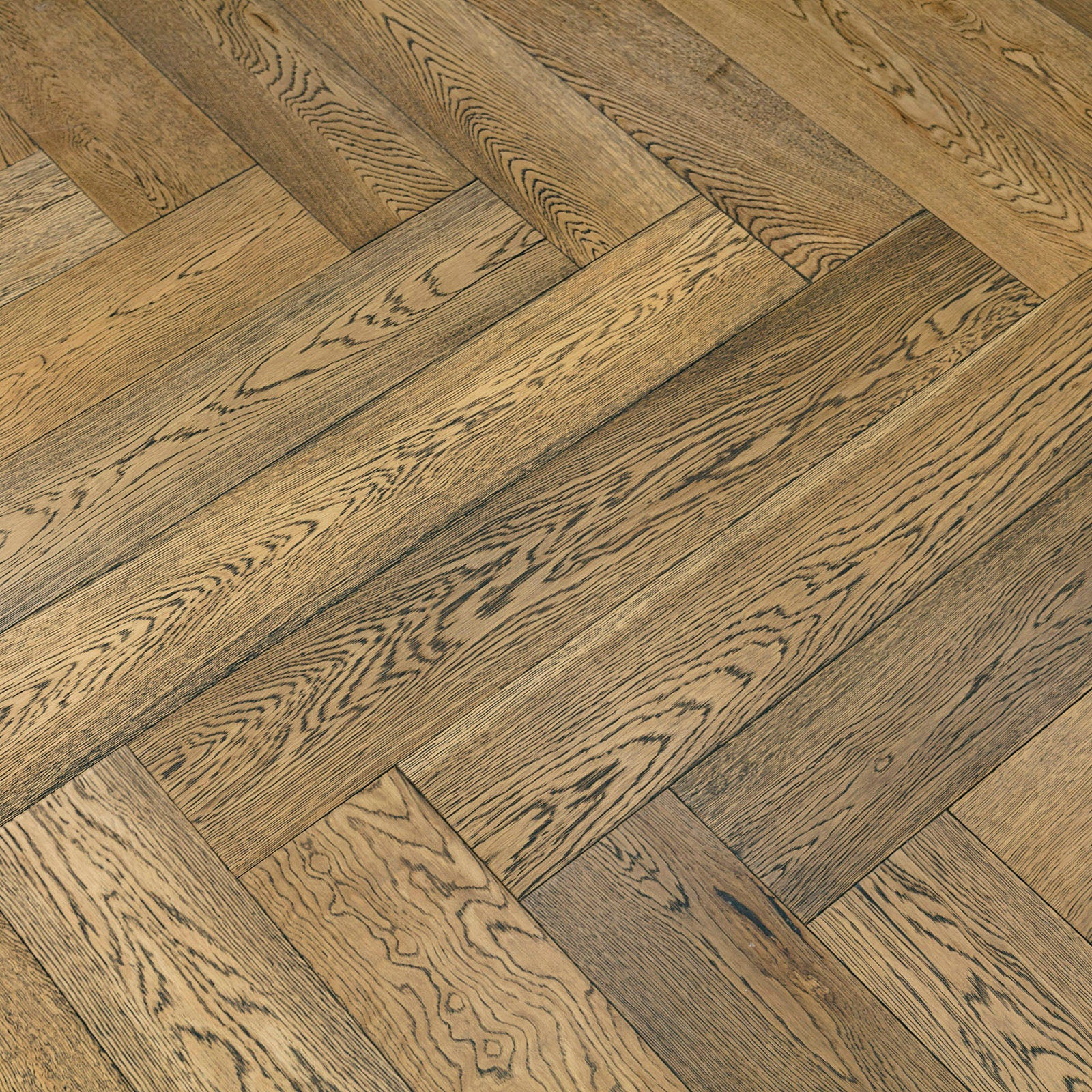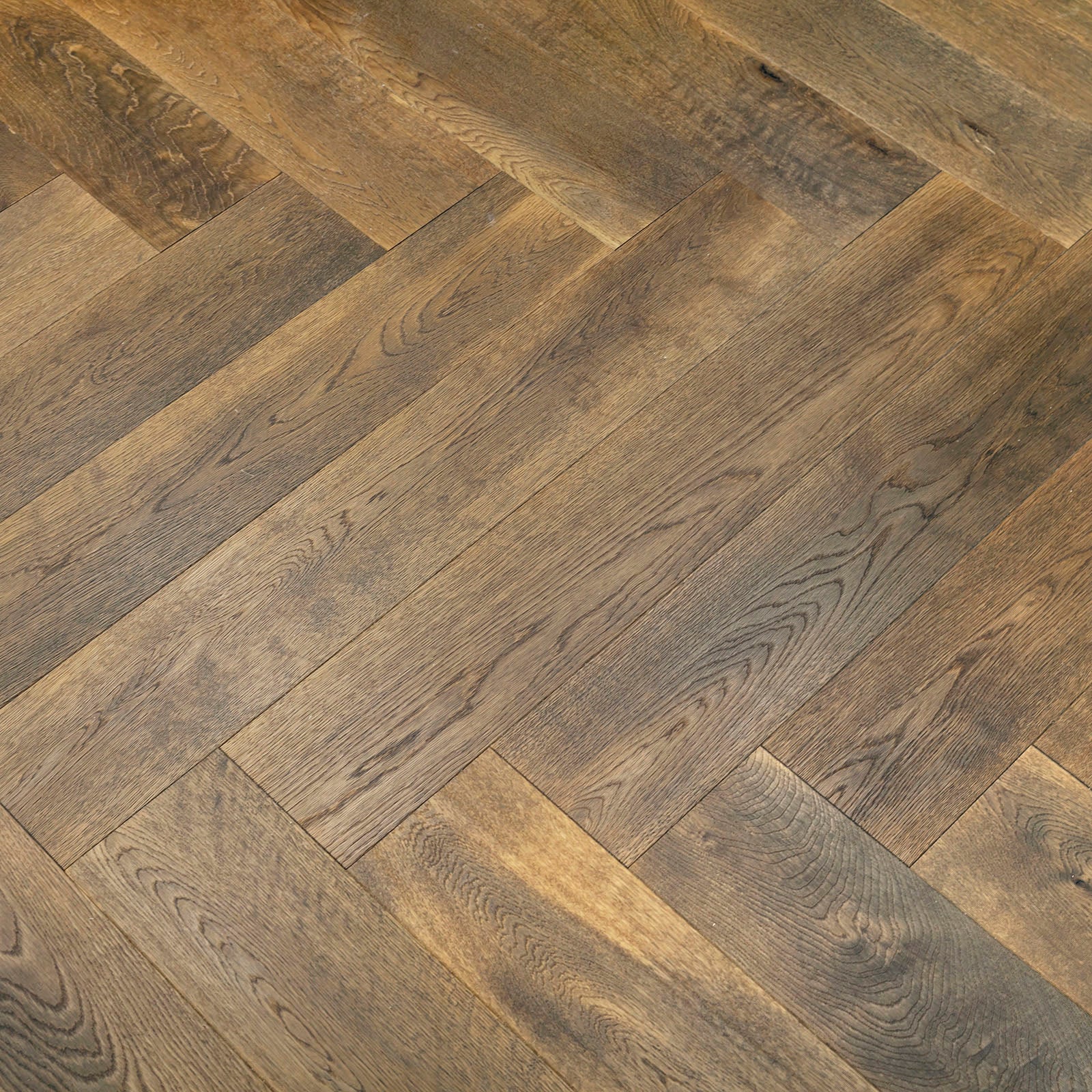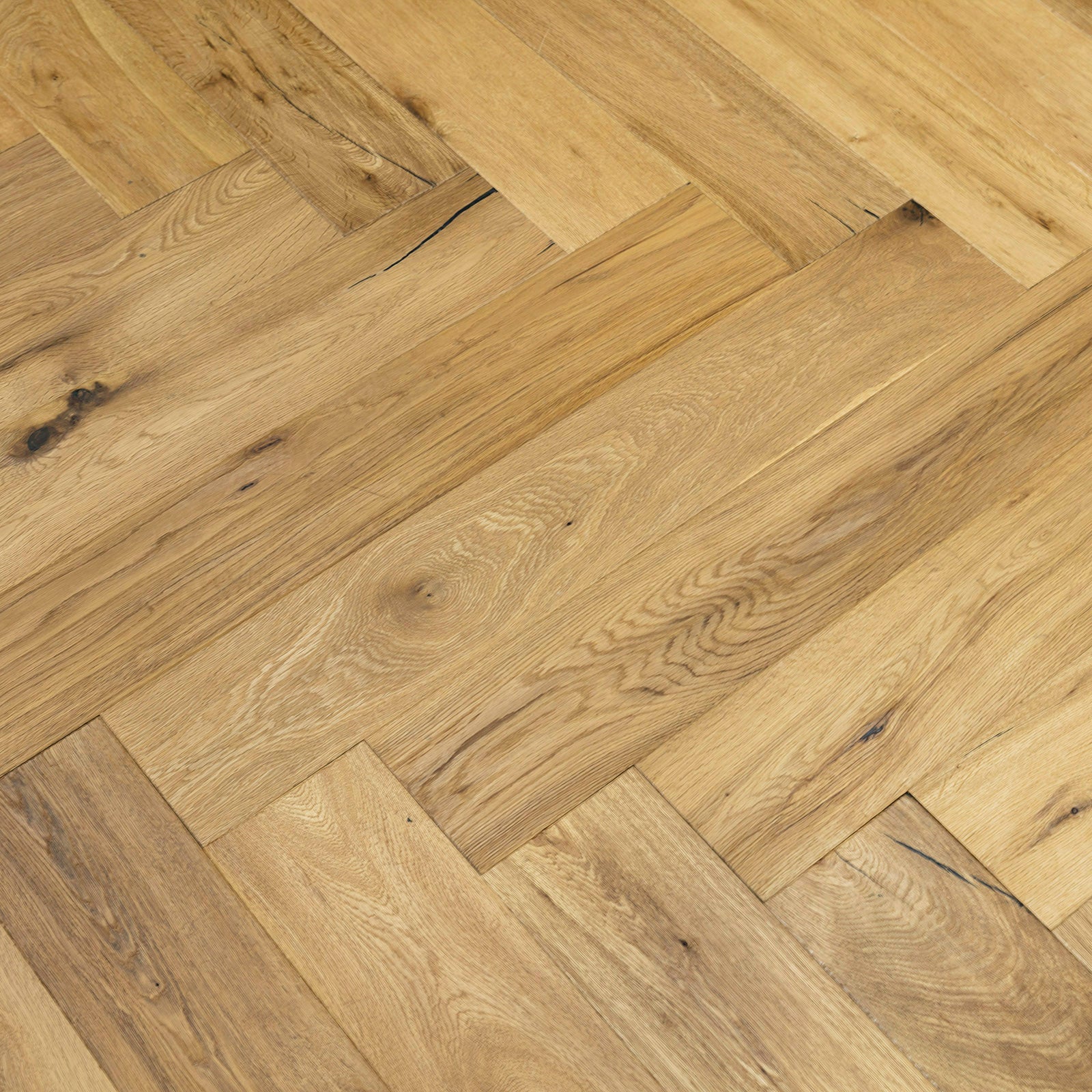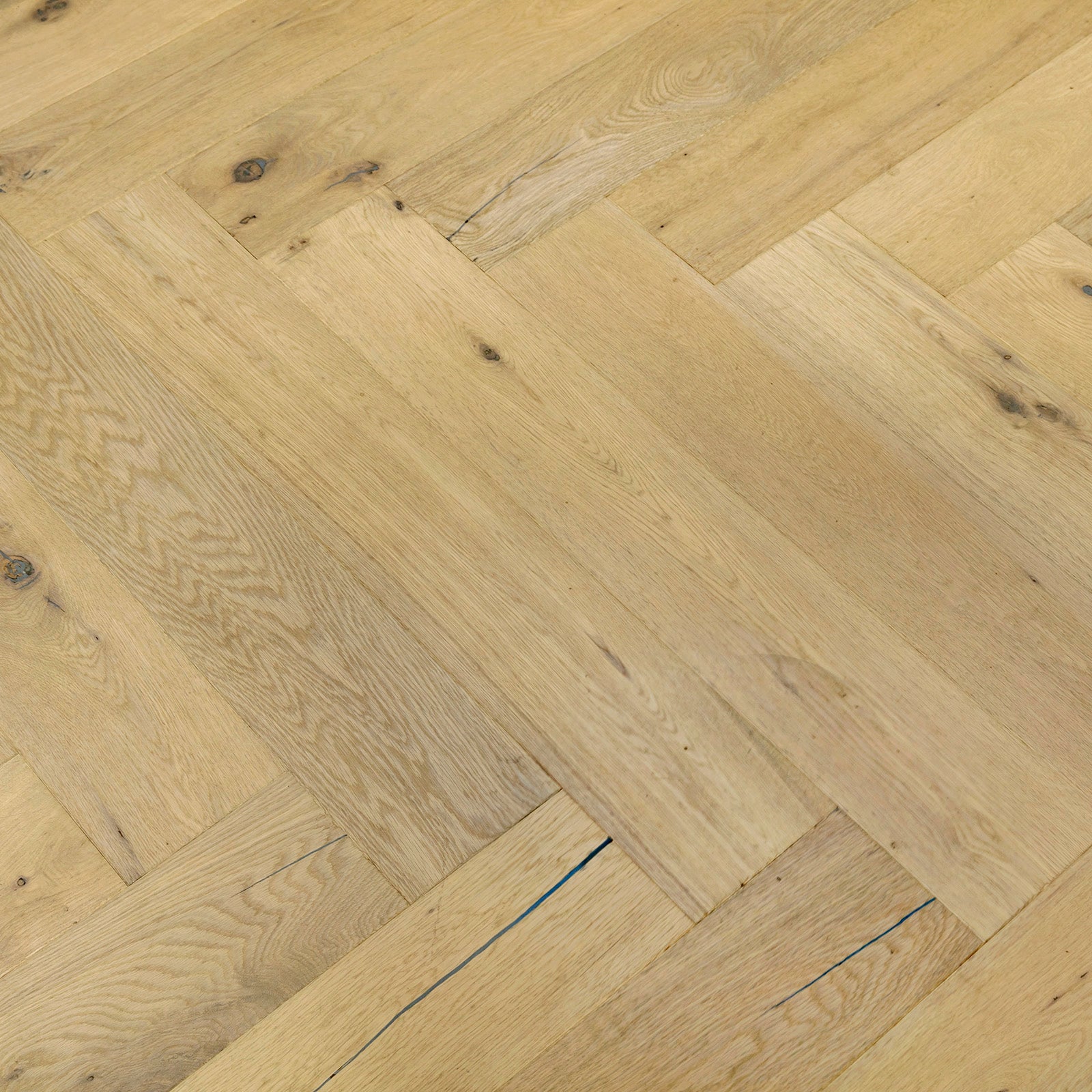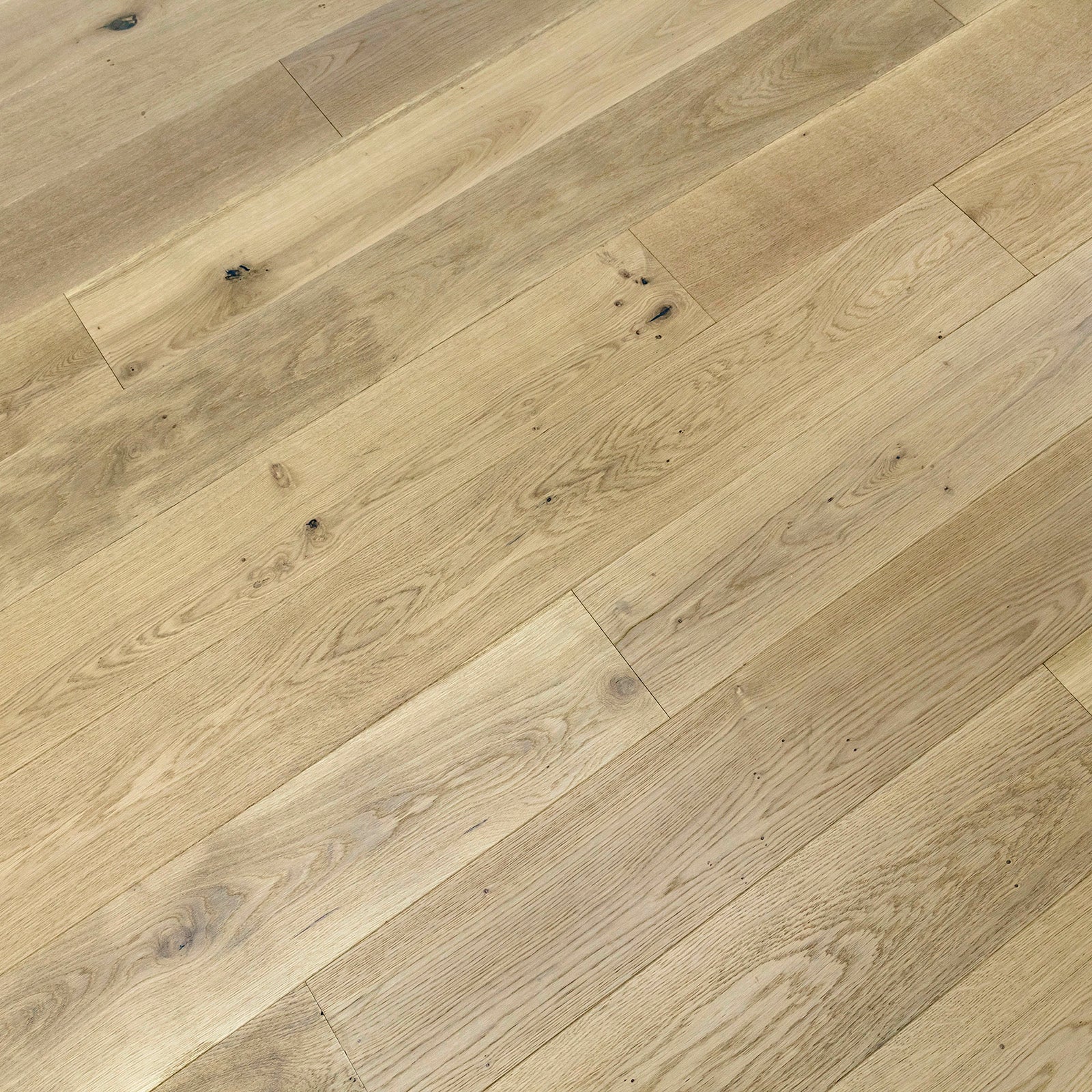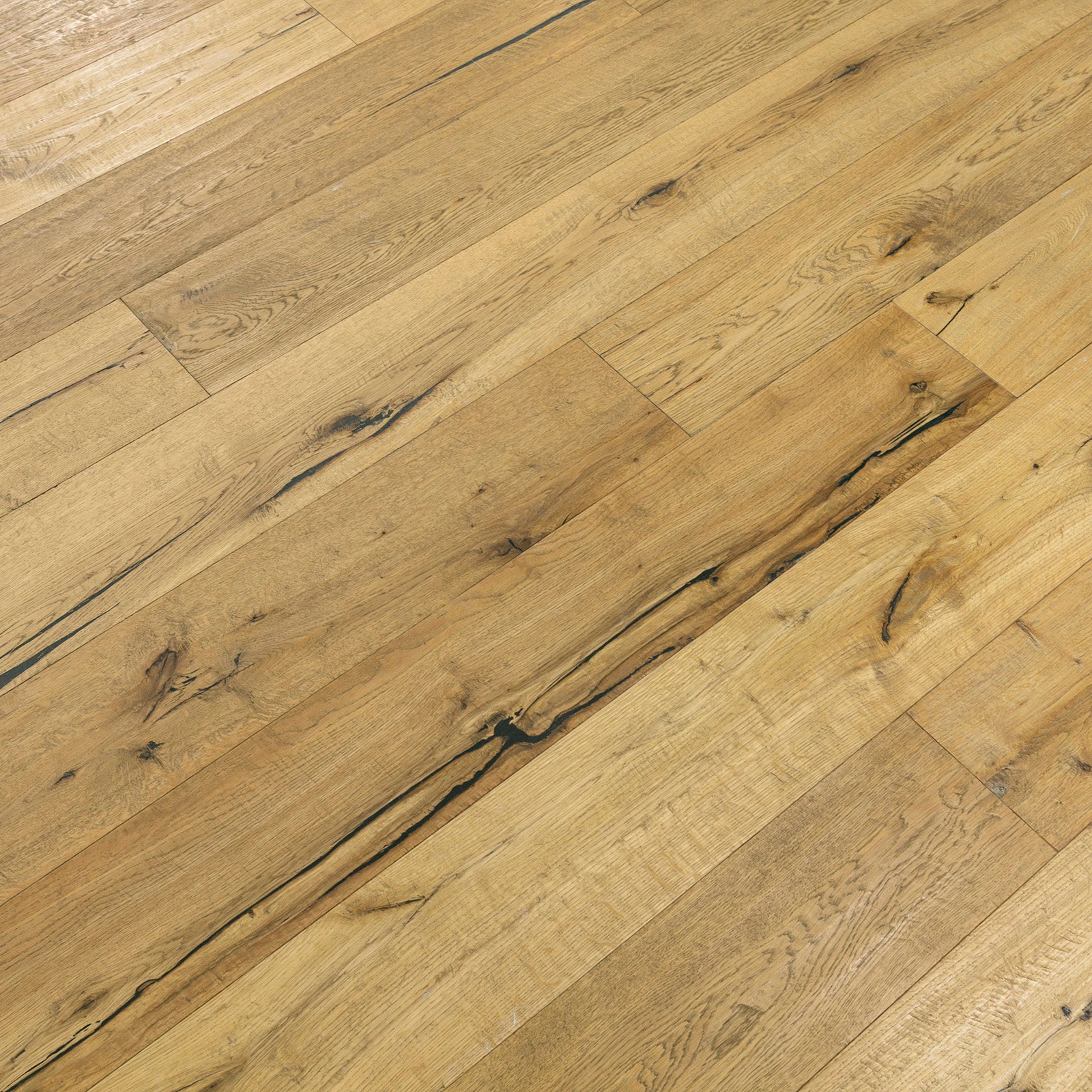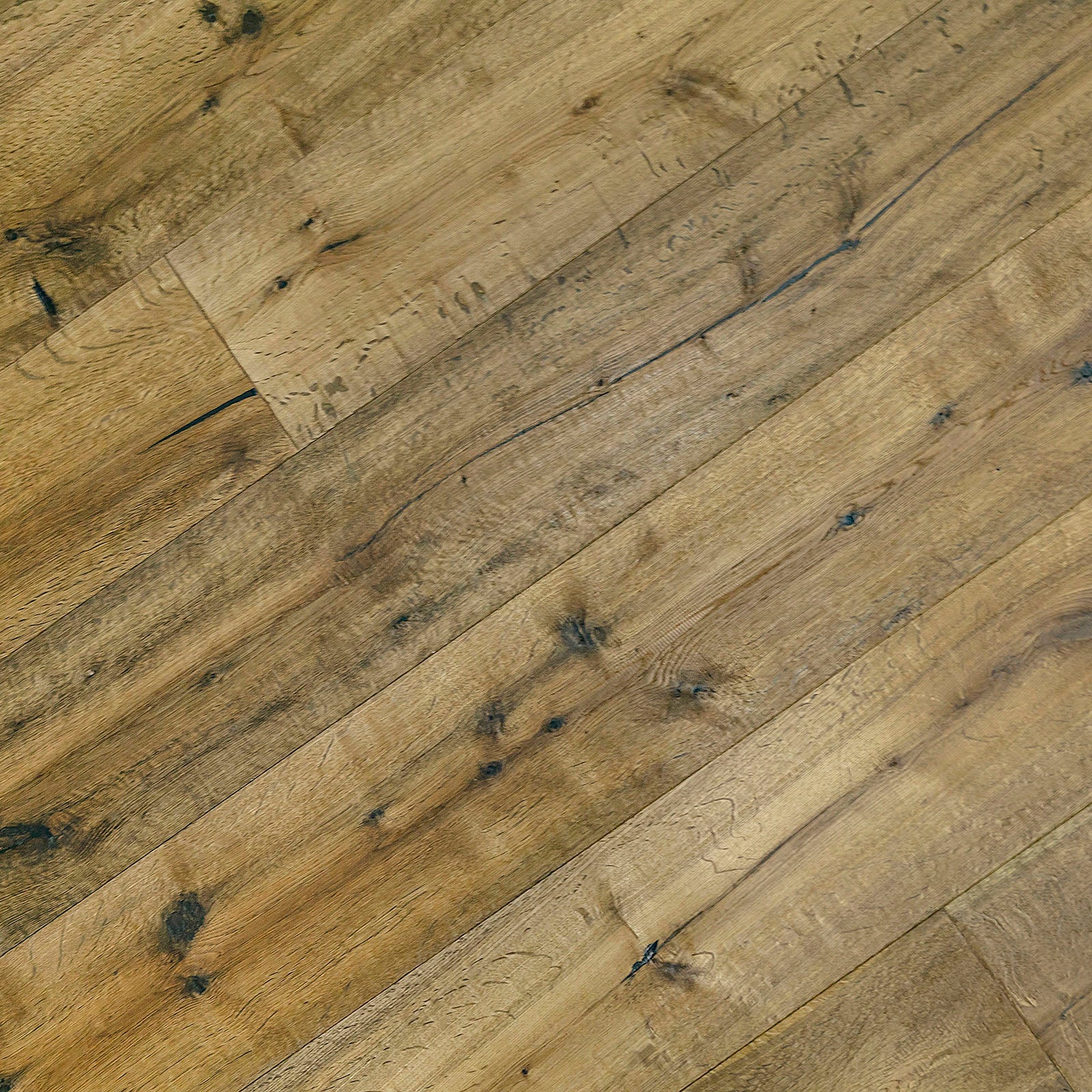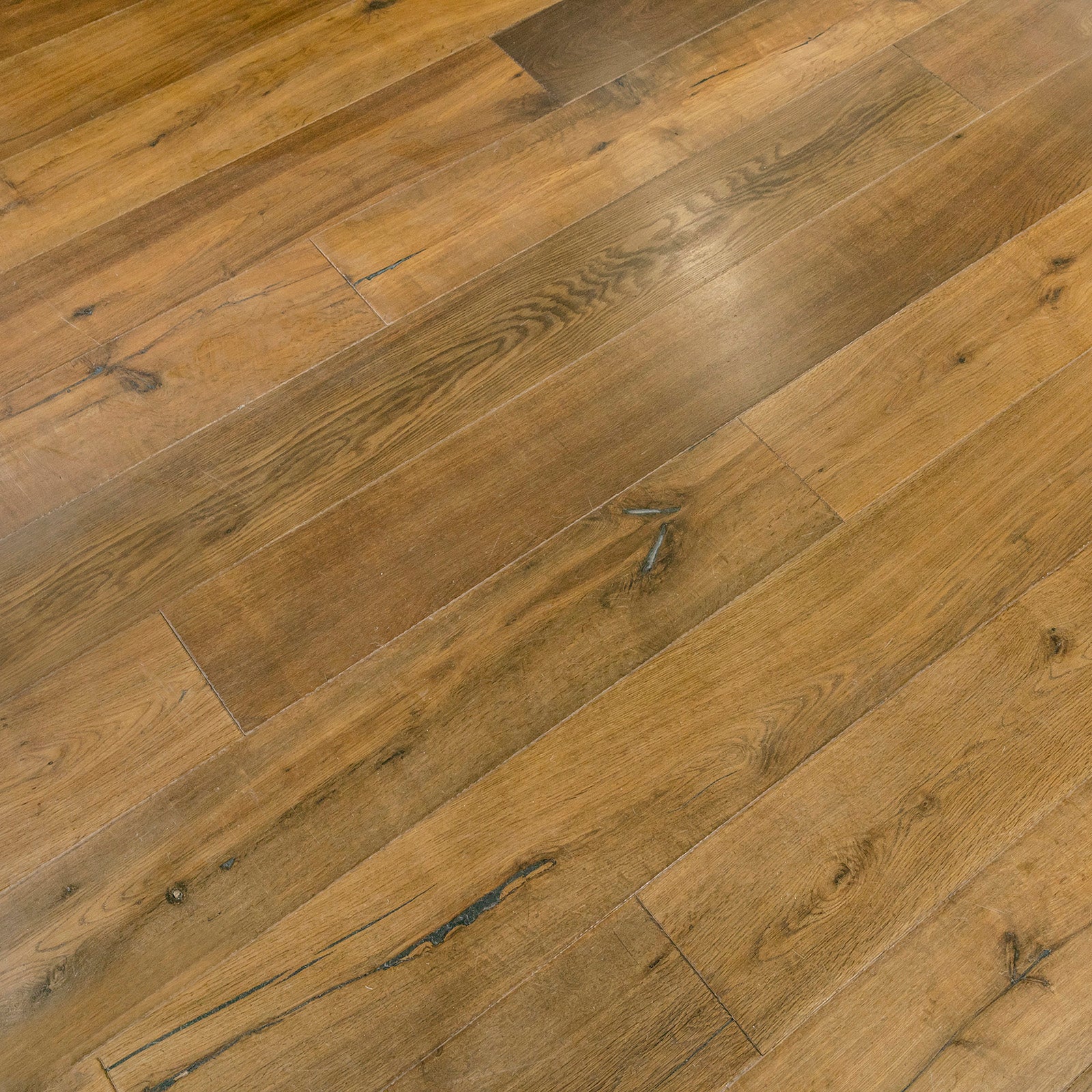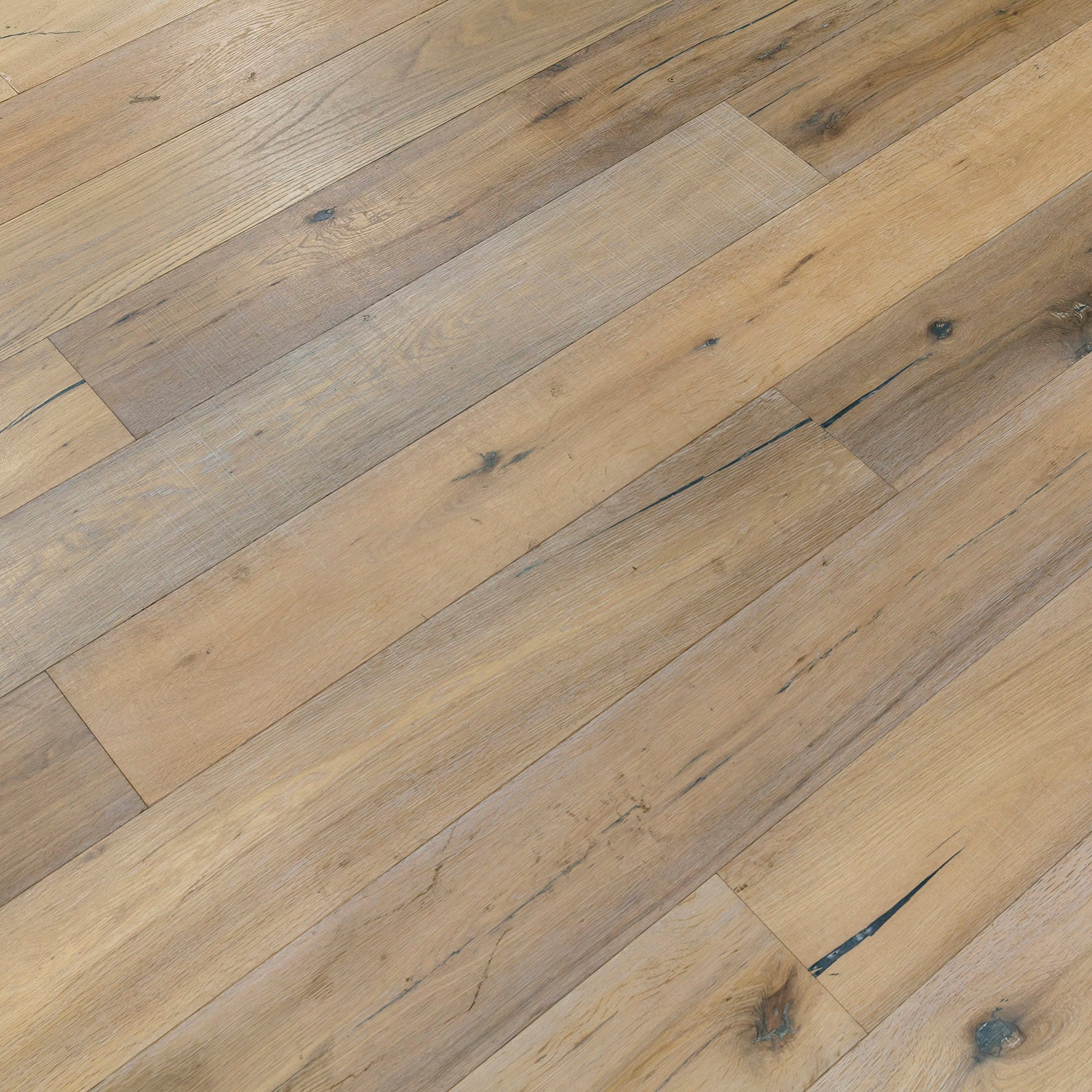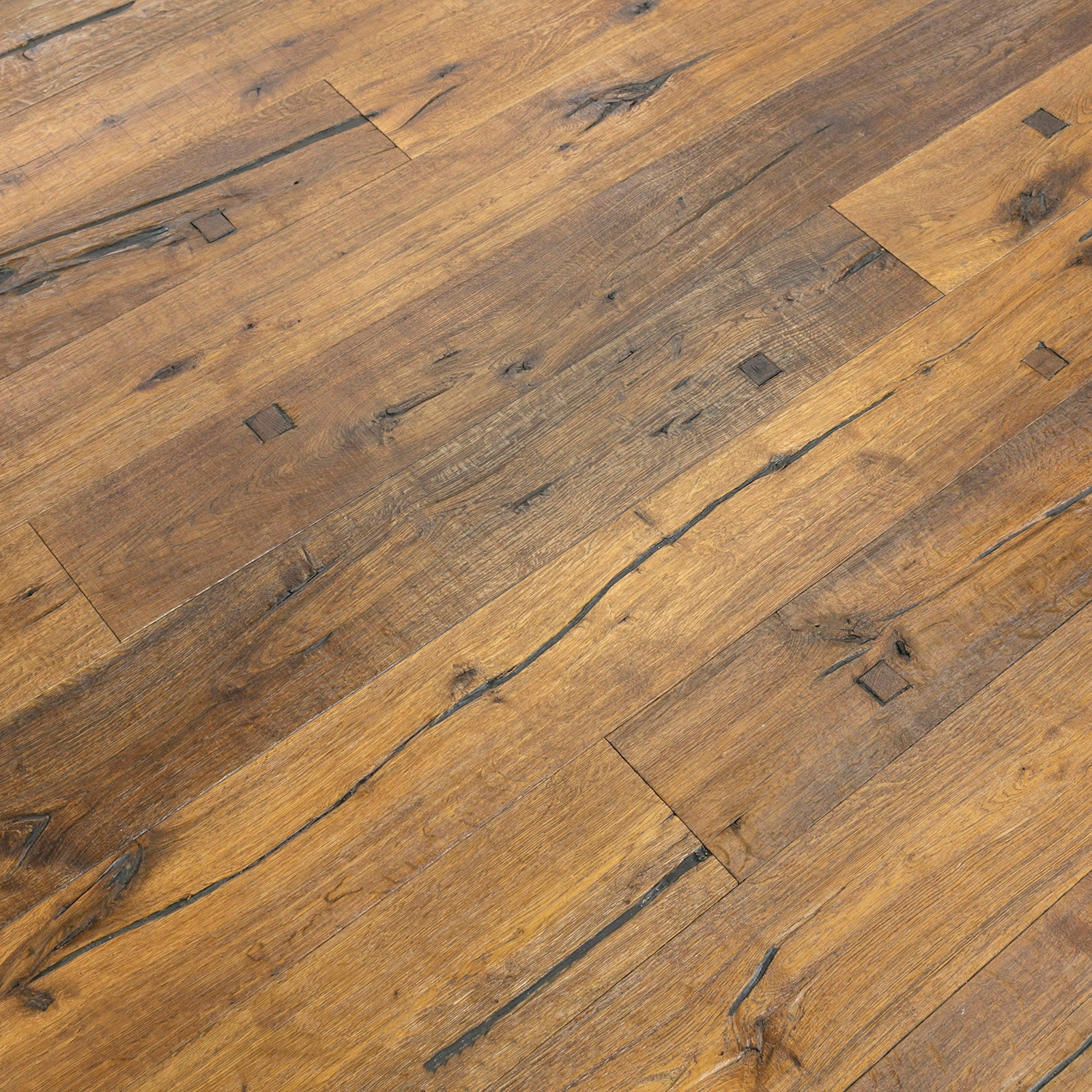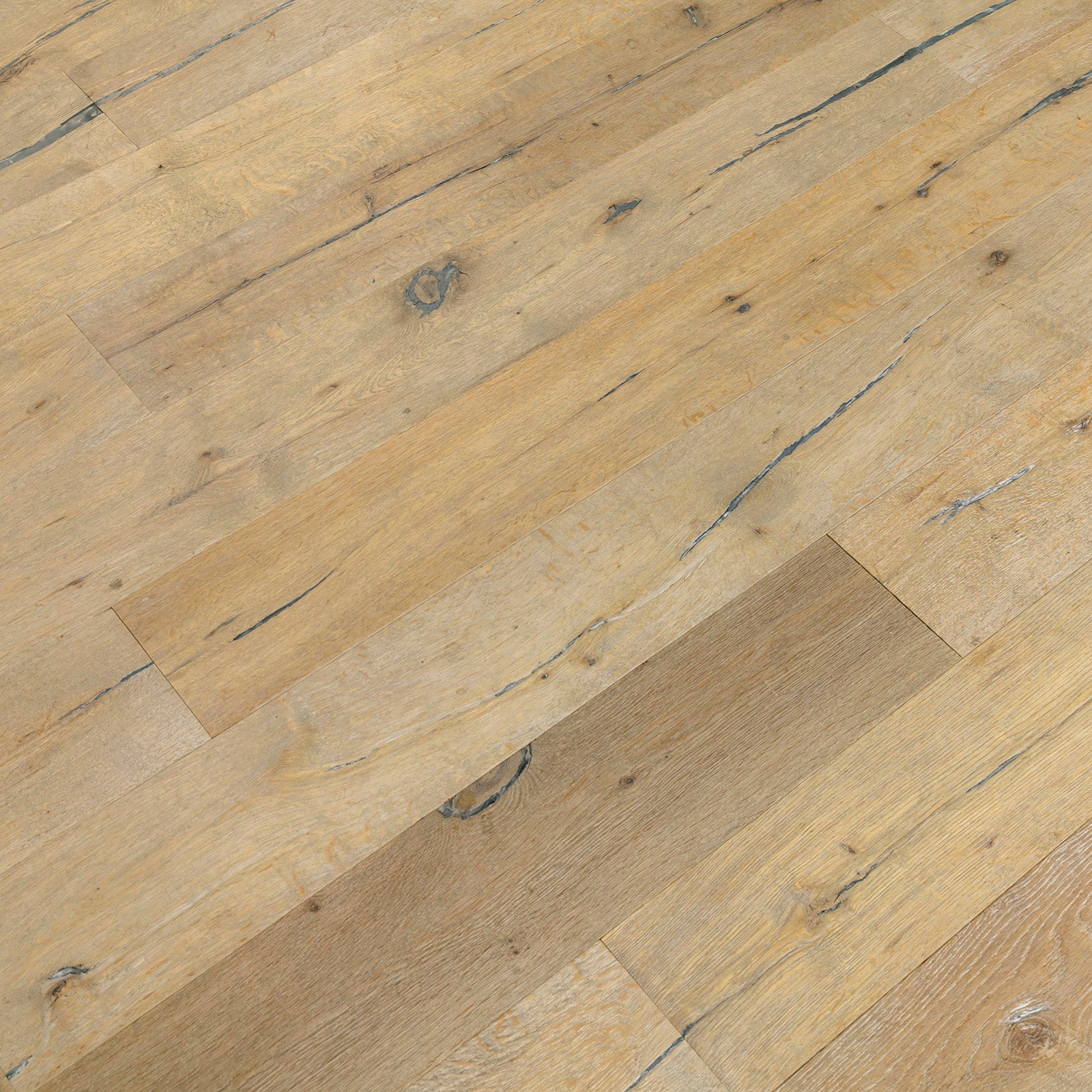Wild River Timber
Wild River Timber
Wild River Timber Flooring specialises in superior quality timber floors which are durable, classic and unique. This flooring will give any home or commercial space a feeling of warmth, beauty and elegance. The timeless nature of European oak compliments architectural, contemporary or traditionally styled homes. So whether you are building or renovating you can be assured we have the right product for you.
Style
Engineered TimberType
Natural Oil
Details
Details
Style:
Engineered TimberFibre:
Natural Oil
FAQ
FAQ
Should I install engineered hardwood myself?
In general, we recommend against installing engineered hardwood on your own. Wood is one of the trickiest types of flooring to install, and it’s easy to make a tiny mistake that could ruin the look you were hoping for. By hiring a professional, you’ll get peace of mind that the job is being done right, with no need for costly fixes or do-overs. Plus, hiring a professional allows you to kick back and relax while the pros handle all of the hard work and clean-up.What is the engineered hardwood installation process?
Installing engineered hardwood can be a complex and difficult process. Your current floors will need to be removed, followed by the application of prepping materials and adhesives. We strongly recommend letting experienced professionals handle the flooring installation process for you. This ensures quality results — without the stress or effort. If you’re ready to replace your floors with engineered hardwood or solid hardwood, ask the professional flooring installers at Flooring America how we can help.How do I clean engineered wood floors?
Thanks to their smooth, even surfaces, engineered hardwood floors are a snap to keep clean. In general, we recommend light daily cleaning with a soft broom or microfiber mop or towel, which will help to remove dust and grime. While engineered wood is resistant to moisture, it’s best to avoid cleaning with steam or water to minimize the risk of damage. For the best results, you should always follow the manufacturer’s recommendations, which should provide detailed cleaning instructions.How durable is engineered hardwood flooring?
Engineered hardwood flooring is very durable as it is constructed with multiple layers of wood. The top layer is a veneer of solid wood that can be finished in a variety of species. The exact durability is determined by the hardness of the hardwood veneer species, as some species are harder than others. To increase your flooring’s durability, try capping your furniture with felt pads, which will reduce damage from friction and scraping.What is the difference between laminate and engineered wood flooring?
Engineered wood flooring is manufactured by layering sheets of hardwood together, creating a natural, yet man-made product. Engineered floors are made from real, genuine hardwood, yet offer an affordable alternative to solid wood products. Laminate is made from artificial materials that mimic the look of hardwood and tend to be thinner than engineered hardwood. When compared to other flooring types both laminate and engineered hardwood make great choices for your home, as they provide numerous options for your personal style and budget.What are the types of engineered flooring?
There are two categories of hardwood flooring: solid hardwood flooring and engineered hardwood flooring. Both are made from real wood, but the difference is that solid floors are simply cut pieces of wood. By comparison, engineered floors are manufactured by combining multiple layers of wood together, usually starting with a plywood base. Engineered hardwood comes in a variety of species and colors that allows you the freedom to design your space!Is engineered hardwood waterproof?
No. The natural enemy of wood floors is water and other forms of moisture. Prolonged exposure to water or fluctuations in humidity can cause hardwood floors to swell or warp, often causing irreversible damage to the floor. In some cases engineered hardwood may resist damage due to moisture better than solid wood floors, but good maintenance of engineered hardwood still requires diligent cleaning up of any spills on the floor and only dry-mopping. It is also important that moisture testing be done on the subfloor before installing any hardwood floors to ensure the conditions of the floor will not damage the wood over time.What is engineered hardwood vs. laminate?
Engineered Hardwood and Laminate are both hard surface products made of multiple layers of materials and both can have the look of beautiful natural wood, but only engineered hardwood is made from real wood. Laminate is comprised primarily of a wood fiber core produced from recycled wood fibers, sometimes referred to as a high-density fiber (HDF) core, with an image of the desired flooring printed on top and coated with a durable wear layer. With the help of modern printing and embossing technologies laminate can be made to look and feel like wood, stone, porcelain or other flooring products while still having the same compressed wood-fiber layer. In contrast, the grain and texture you experience with engineered hardwood is the real deal, a layer of natural wood cut from an actual wooden timber. In some cases the core layer of engineered hardwood may also be a HDF core instead of layers of real wood or plywood, but the top veneer will always be real wood.What is engineered hardwood flooring?
Engineered hardwood floors are wooden floors made with multiple layers of wood adhered together, rather than one plank cut from a single timber, to create flooring planks available in multiple sizes and thicknesses. The top layer, often referred to as the veneer, is made of the species of wood desired to be seen. The bottom layer is also made of wood, but not necessarily the same species as the top layer. In the middle is a core built from 5 to 7 layers of plywood that crisscross in different directions. The species of wood uses for these core layers will vary depending on the quality of the product. Higher quality engineered wood products will boast core layers made of higher grade hardwoods. This crisscross construction of the core layers creates a highly stable core that is less likely to expand, contract or shift when exposed to moisture, humidity and temperature. This makes engineered wood flooring a great option in rooms that are subject to moisture (like basements) or over concrete slab and radiant heating systems. Often times engineered hardwood products are warrantied for use in rooms where solid hardwood would not be warrantied, such as below grade.